When we stop to marvel at the wonders of the natural world, we usually forget about all the life that is going on that we don’t get to see. But there is a lot happening in places we forget to look. For example, any soil is an entire ecosystem, containing a variety of small and tiny animals, bacteria, and fungi. In fact, if a fungus didn’t send up a fruiting body (a.k.a. mushroom) every once in a while, most observers wouldn’t realize it was there at all. We humans tend to behave as though something unseen is something that doesn’t exist, and I admit to the very same thinking with regards to my own kitchen: anything stored way up in cupboards I can’t reach, may as well not be there at all.
But there are places where we can witness the life occurring below our feet, and floating docks in marinas and harbors are some of the best. Of course, the trick is to “get your face down where your feet are”, a piece of advice about how to observe life in tidepools that applies just as well to investigating the dock biota. Once you get used to the idea of lying on the docks, which can be more or less disgusting depending on time of year and number of birds hanging around, a whole new world literally blossoms before your eyes.
Some of the flower-looking things are indeed anthozoans (‘flower animal’) such as this plumose anemone:

09 October 2019
© Allison J. Gong
and this sunburst anemone:
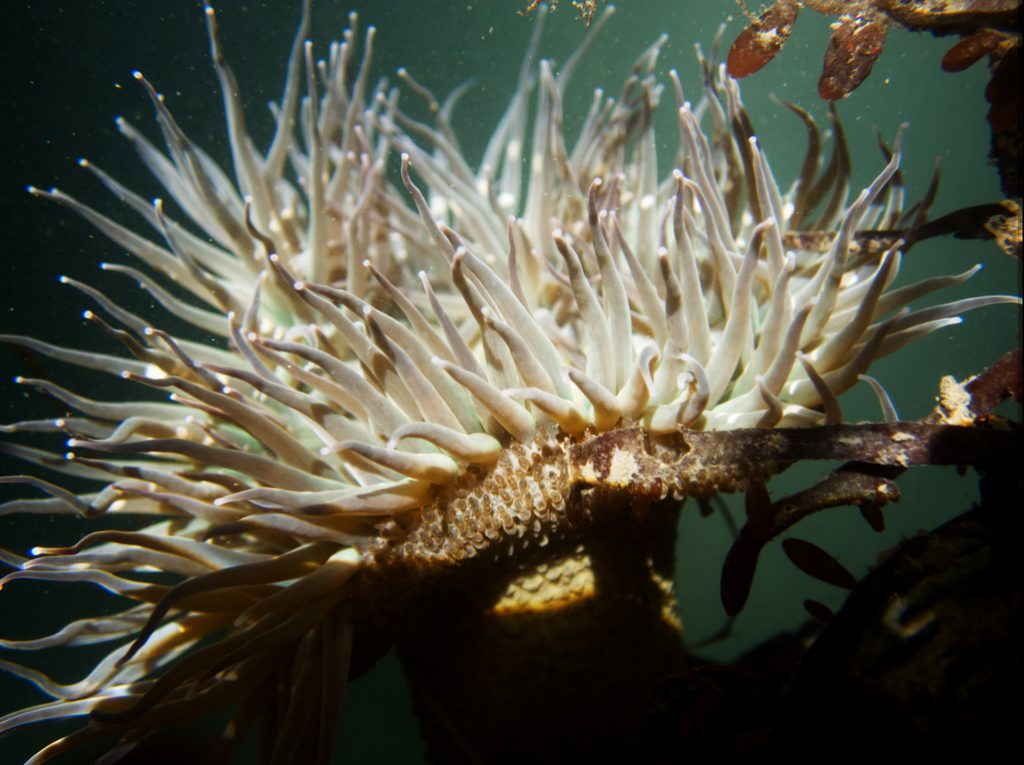
09 October 2019
© Allison J. Gong
Other animals look like dahlias would look if they were made of feathers. Maybe that doesn’t make sense. But see what I mean?
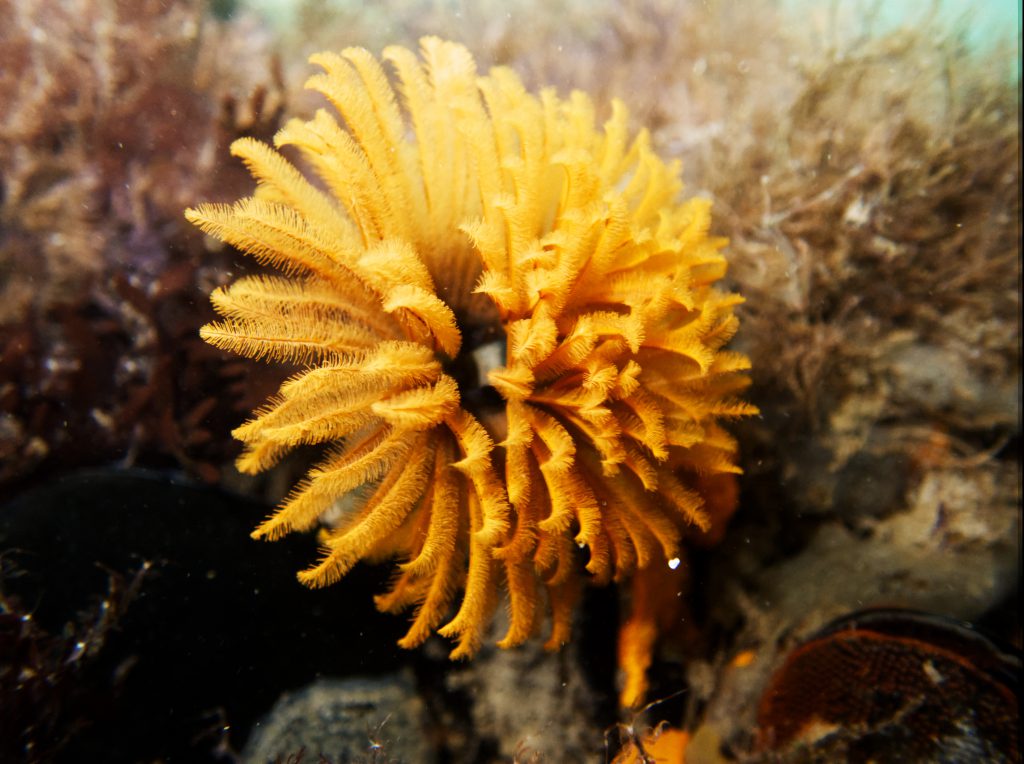
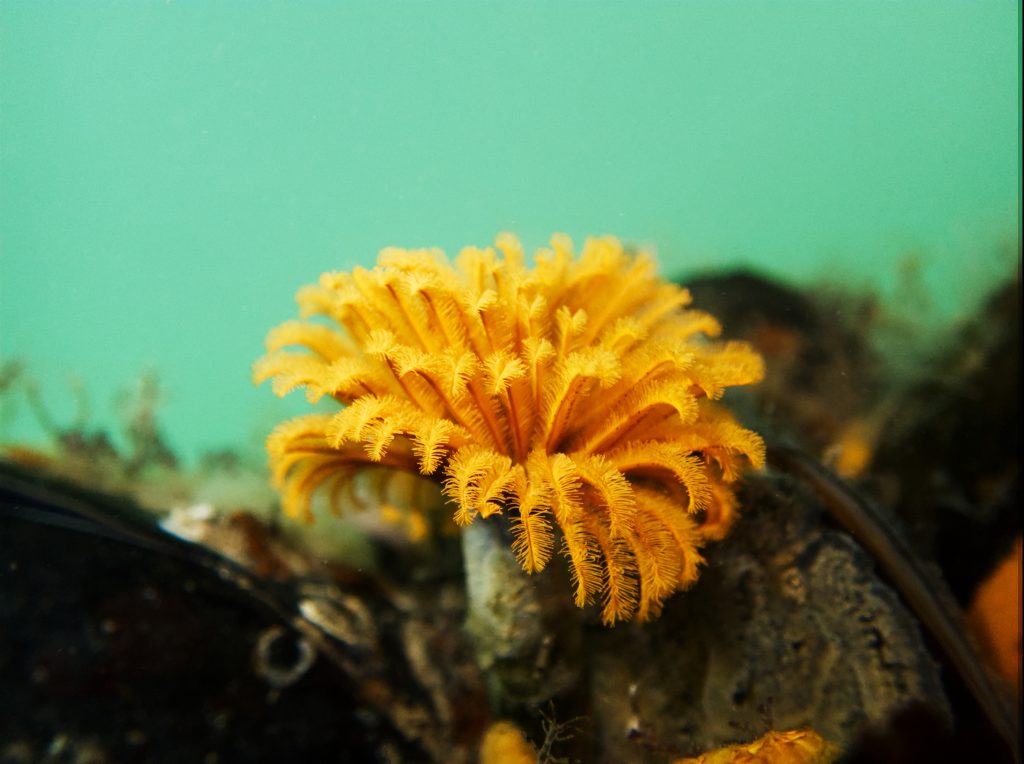
This is Eudistylia polymorpha, the so-called feather duster worm. These worms live in tough, membranous tubes attached to something hard. They extend their pinnate tentacles for feeding and are exquisitely sensitive to both light and mechanical stimuli. There are tiny ocelli (simple, light-sensing eyes) on the tentacles, and even casting a shadow over the worm causes it to pull in its tentacles very quickly. This behavior resembles an old-fashioned feather duster, hence the common name. These were pretty big individuals, with tentacular crowns measuring about 5 cm in diamter. Orange seems to be the most common color at the Santa Cruz harbor.
One of the students pointed down at something that he said looked like calamari rings just below the surface. Ooh, that sounds intriguing!

And he was right! Don’t they look like calamari rings? But they aren’t. These are the egg ribbons of a nudibranch. They appeared to have been deposited fairly recently, so I went off on a hunt for the likely parents. And a short distance away I caught the nudibranchs engaging in the behavior that results in these egg masses. Ahem. I don’t know if the term ‘orgy’ applies when there are three individuals involved, but that’s what we saw.
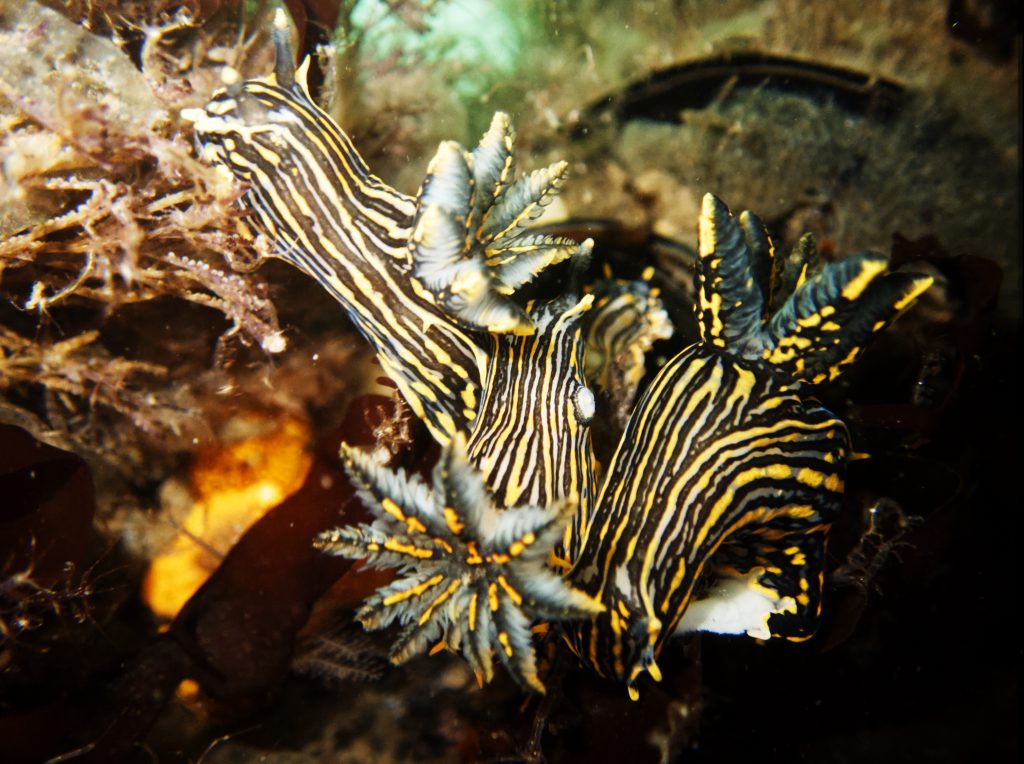
09 October 2019
© Allison J. Gong
To give you some idea of how these animals are oriented, that flower-like apparatus is the branchial (gill) plume, which is located about 2/3 of the way down the animal’s dorsum. The anterior end bears a pair of sensory organs called rhinophores; they look kind of like rabbit ears. You can see them best in the animal on the left.
When you see more than one nudibranch in such immediate proximity it’s pretty safe to assume that they were mating or will soon be mating. Nudibranchs, like all opisthobranch molluscs, are simultaneous hermaphrodites, meaning that each can mate as both a male and a female. The benefit of such an arrangement is that any conspecific individual encountered is a potential mate. The animals pair up and copulate. I’m not sure if the copulations are reciprocal (i.e., the individuals exchange sperm) or not (i.e., one slug acts as male and transfers sperm to the other, which acts as female). In either case, the slugs separate after mating and lay egg masses on pretty much whatever surface is convenient. Each nudibranch species lays eggs of a particular morphology in a particular pattern. Some, such as P. atra, lay eggs in ribbons; others produce egg masses that look like strings of miniature sausages.
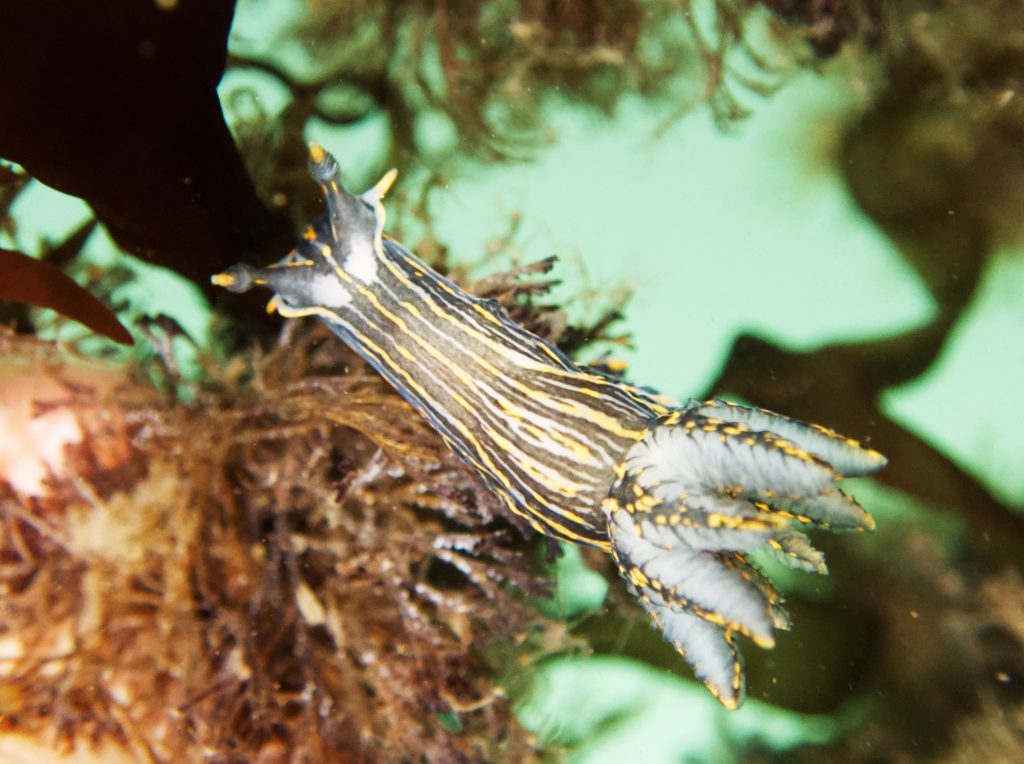
09 October 2019
© Allison J. Gong
This is the first time I’ve seen big Polycera like these. The slugs were about 4 cm long. They eat a bryozoan called Bugula, and there is a lot of Bugula growing at the harbor these days. Maybe that’s why there were so many Polycera yesterday. Nudibranchs are the rock stars of the invertebrate world–they are flamboyantly and exuberantly colored, have lots of sex, and die young. They can be very abundant, but tend to be patchy. Quite often an egg mass is the only sign that nudibranchs have been present.
The next time you happen to be at a marina poke your head over the edge and take a look at the stuff living on the dock. Even if you don’t know what things are, you should see different textures and colors. With any luck, you’ll be pleasantly surprised at the variety of life you find under your feet.

At least you don’t have to worry about poison oak. Worst case I ever had, I got by laying flat on my belly to photograph something. Fascinating article.
Ha ha, no poison oak in the intertidal! Some things can sting you, but around here there isn’t anything too deadly.